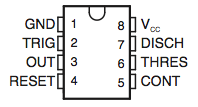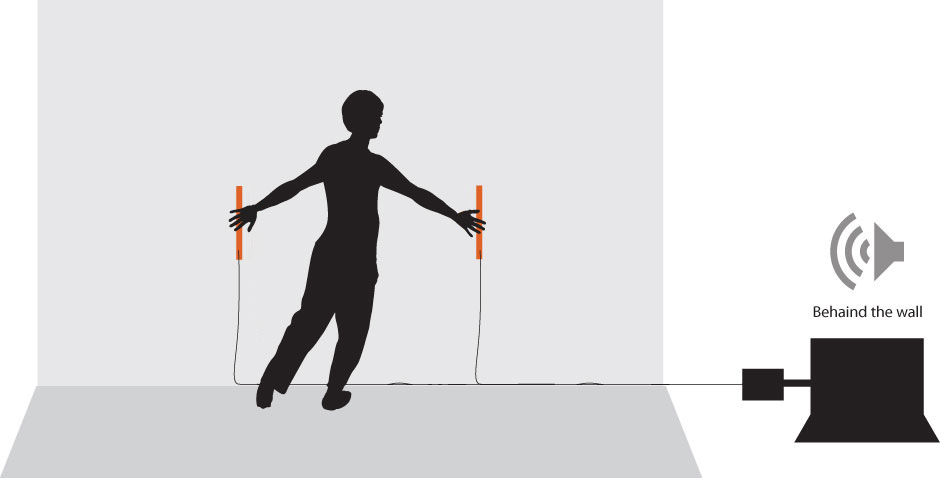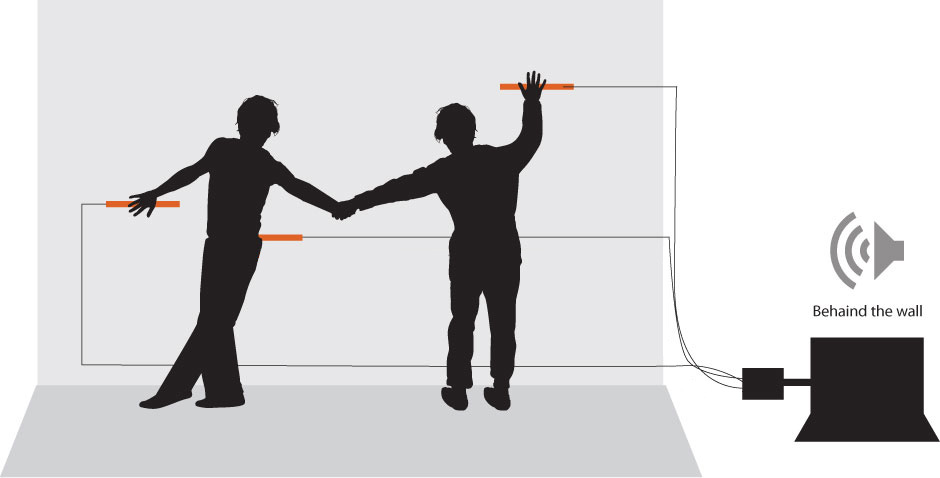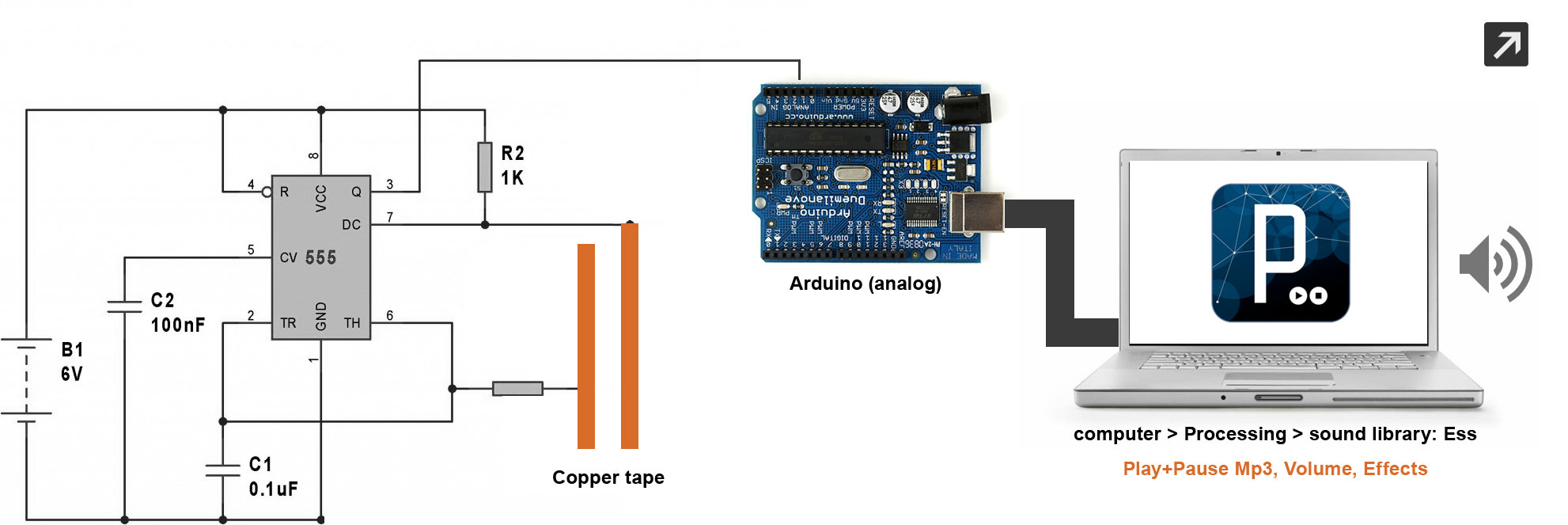wallSound / EXPLORATION
Interaction
Mechanism
Working on wallSound's technical aspects, I began looking into different conductive materials, as well as capacitive sensors with and without additional hardware, that will work with the human body resistance similar to a 200 kilohm resistor.
The search after the right circuit started at a hacker's theramin project.
The circuit is built out of two NE555 timer chips and two photo resistors that manipulate one output speaker’s pitch and powered by a 9Volt battery.

555 timer datashit

In this circuit the NE555 is being used in its astable mode, meaning as an oscillator.
The chip feeds current into the capacitor until it is full, and then drains it out.
The frequency of the oscillation is set by the resistors and capacitors: The resistors set how fast to fill and drain the capacitor.
The size of the capacitor indicates how long it takes before it fills.
This experiment failed to give nice clear reading when touching two stripes simultaneously, interrupting with the playing and distorting the sounds.
Links to other relevant projects:
Arduino touch sensitive digital pins.
Drawdio a musical tool built around a pencil (or other everyday objects).
Last, I tested the capSense Arduino library. The library turns the Arduino pins into capacitive sensors that measure body resistance when interacting with the conductive copper stripes, reading the changed output frequency.

setup


Summary
wallSound is a physical interface installation that encourages new body movement and physical experience as an individual or as a small group. In several iterations, wallSound will test body dialogue with common elements of the built environment, starting with walls. This dialogue will be enhanced and expanded by the fact that the body itself will function as conductive matter, meaning the body is the switch that generates different story telling sounds.
The wallSound consists of several stripes of conductive copper placed on a wall or other constructed surfaces. The circuit is built based on Paul Badger’s Arduino CapSence library documentation. The library turns the Arduino pins into capacitive sensors, which measure body resistance, reading the changed output frequency. The circuit includes 1 megohm resistor between the send pin and the receive pin which is the sensor pin. Between the two pins a wire is connected to a copper stripe. The delay between the send pin changing and the receive pin changing is determined by the resistor and by the body capacitance touching the copper. The Arduino communicates with Processing. Using Ess sound library, patches of mp3 are being played and paused in correspondence to the state of the circuits.
A wall is not built to body touch. A wall tells where body and communication stop. It is a limited object in its affordances, as it separates and obstructs. wallSound invites interaction by touch that reveals a story or fantasy, thus deconstructing the typical narrative of experience.
The sounds try to tell a story, a secret, or to reveal an illusion of what is behind or within the wall. Lovers fight in “a wall between us”, synthesized sounds resonate in the “wallSound” basic installation, sounds of running water in “waterPole”, etc. The vertical plane structure of the interface will require the body to use its muscles in ways that break out of the bank of everyday movements in a close, self-aware, conscious connection. The body is perceived as an independent matter, connected to another matter.
The amount of people interacting with wallSound will be one measure of its success, along with their level of surprise by revealing the secret this still surface holds. The level of interest working with the body as a source of power activating and mixing sounds will also be measurable elements for the wallSound’s success as a concept and as an interface. The work will be documented in a set of photos, videos and interviews with people who’ve interacted with it.
